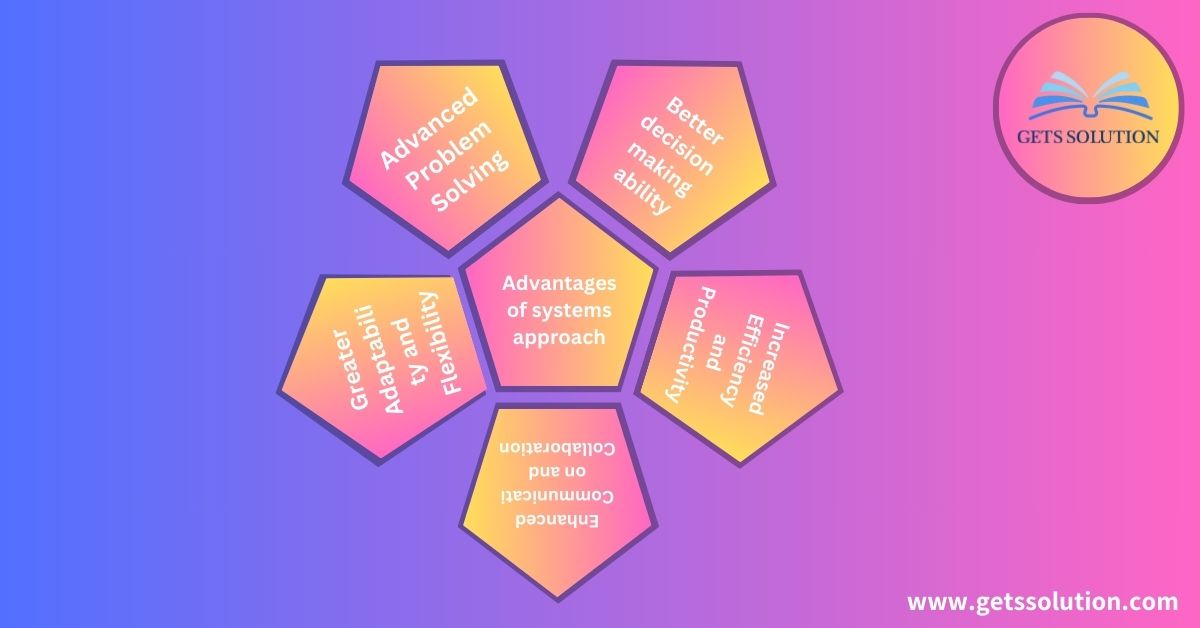The world around us is complex and interconnected. From the human body to the global economy, everything is made up of small parts that work together as a whole. This is where the systems approach comes in.
What is a systems approach?
The systems approach is a way of thinking and problem-solving that focuses on understanding the big picture and how different parts of a system interact with each other. It’s like taking a step back from individual components and looking at the entire system as a whole.
Understanding the Big Picture:
Imagine trying to fix a broken car without knowing how it works. It won’t be very easy, right? The same is true for solving complex problems. If you only focus on individual parts, you’ll miss the bigger picture and miss the root cause of the problem.
Identifying interrelationships and dependencies:
The systems approach helps you identify the interrelationships and dependencies between different parts of the system. This allows you to see how changes in one part can affect other parts and the entire system.
Advantages of systems approach:
1. Advanced Problem-Solving:
By understanding the big picture and how the different parts interact, you can develop more effective solutions to complex problems.
2. Better decision-making ability:
The systems approach can help you make better decisions by providing a more holistic understanding of the situation.
3. Increased Efficiency and Productivity:
By identifying and eliminating inefficiencies, a systems approach can help you improve efficiency and productivity.
4. Enhanced Communication and Collaboration:
The systems approach encourages collaboration and communication between different stakeholders, which can lead to better outcomes.
5. Greater Adaptability and Flexibility:
By understanding how to manage complex systems, you can become more adaptable and flexible to change.
Examples of systems approach in action:
1. Business Management:
Businesses can use a systems approach to improve their operations, manage resources, and make better decisions.
2. Health Care:
Healthcare providers can use a systems approach to improve patient care, reduce costs, and develop more effective treatments.
3. Education:
Teachers can use the systems approach to improve student learning, create more effective learning environments, and develop better curricula.
4. Environmental Sustainability:
Environmental organizations can use a systems approach to develop sustainable solutions to environmental problems.
5. Technology Development:
Technology developers can use the systems approach to create more innovative and user-friendly products.
Getting Started with the Systems Approach:
1. Define System:
The first step is to define the system you are interested in. What are the limitations of the system? What are the key components?
2. Identify key components and relationships:
Once you have defined the system, identify the major components and how they interact with each other.
3. Develop a Model or Diagram:
A visual representation of the system can help understand how it works.
4. Analyze the system and identify areas of improvement
Once you have a good understanding of the system, you can begin to analyze it and identify areas for improvement. This includes looking for ways to:
- Reduce complexity: Can you simplify the system in any way without compromising its effectiveness?
- Improving communication and collaboration: Are there ways to improve communication and collaboration between different parts of the system?
- Increase efficiency and productivity: Can you eliminate waste and streamline processes to improve efficiency and productivity?
- Increase adaptability and flexibility: How can you make the system more adaptive to change and more resilient to disruptions?
5. Implement Changes and Monitor Progress:
Once you’ve identified areas for improvement, you can begin implementing changes. It is important to monitor the progress of your changes and make adjustments as necessary.
conclusion:
The systems approach is a powerful tool that can be used to solve complex problems and make better decisions. By understanding the big picture and how different parts of the system interact, you can develop more effective solutions and achieve better results.
Access Now: Demystifying Process Costing What You Need to Know
FAQs:
1. What are the limitations of the systems approach?
The systemic approach can be complex and time-consuming. It can also be difficult to define the boundaries of a system and identify all the major components and relationships.
2. What are some common challenges in implementing the systemic approach?
- Getting buy-in from stakeholders: Getting everyone involved to agree on the need for a systemic approach and commit to implementing changes can be difficult.
- Managing complexity: Complex systems can be difficult to understand and analyze.
- Overcoming resistance to change: People can be resistant to change, especially if they are comfortable with the way things are currently being done.
3. What are some resources for learning more about the systemic approach?
There are many resources available, including books, articles, and online courses, to learn more about the systemic approach. Some helpful resources include:
- The Systems Thinking Handbook by Donella Meadows
- Thinking in Systems by Donella Meadows
- Introduction to Systems Thinking by Barry Richmond
- Society for Systems Thinking (www.systemdynamics.org)

1 thought on “5 Benefits of Using a Systems Approach”